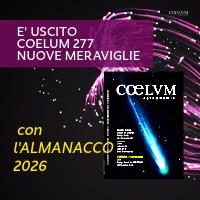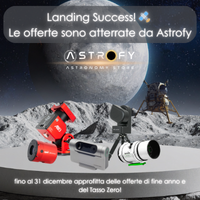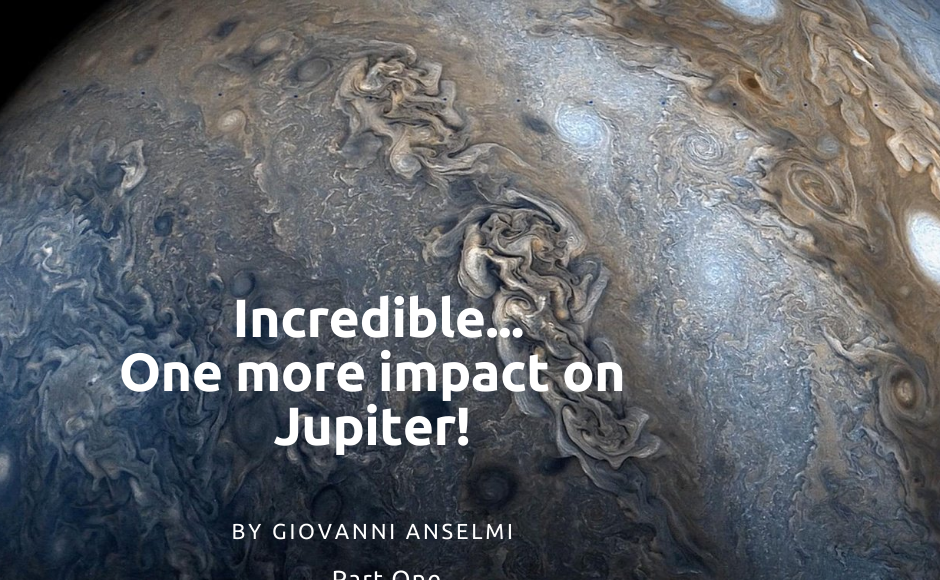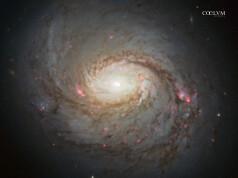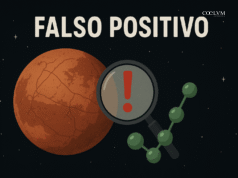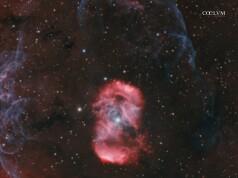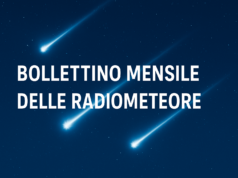In mid-September, another asteroid plunged into the thick atmosphere of the giant of the Solar System, disintegrating in a flash of light. Since 1994, the year of the first incredible collision, that of the comet Shoemaker-Levy 9, this is the eighth event that testifies to the ability of Jupiter to attract comets and small asteroids. A phenomenon numerically in continuous ascent thanks to the always better techniques of digital shooting…
A phenomenon that deserves to be told in all its historical path.
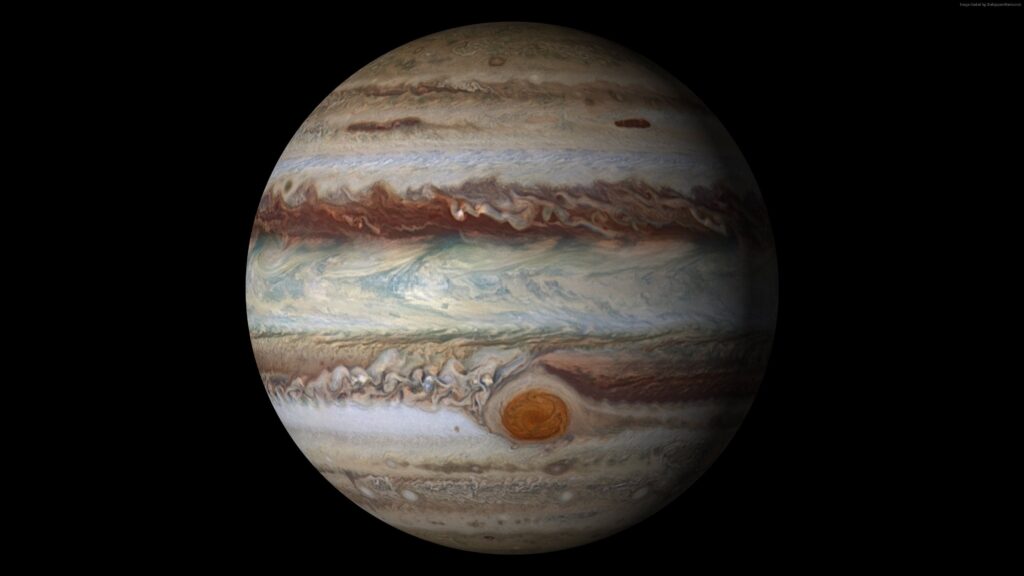
Planet Jupiter
It is September 13. In Brazil, the sun has just set. For many astronomy enthusiasts, it is the beginning of an observing night like many others.
Jupiter is on the eastern horizon, about 25° high. José Luis Pereira, an astrophotographer from São Caetano do Sul, just south of São Paulo, begins to capture the planet in high resolution with his 275 mm diameter reflector telescope. As he has been doing since 2004, when he began a methodical monitoring activity of the gas giant.
The evening offers the meridian passage of the great red spot, but the seeing is not constant. After a few good images, the conditions worsen and the shots become muddy and poor in detail, so that the temptation comes to disassemble everything and go to bed waiting for better nights.
So the acquisition of footage is interrupted and the mouse moves the cursor to the button that would turn off the computer; but for some reason, Jose hesitates … and it is by chance, intuition, or simple dedication, he decides not to click, but to give himself another half hour of waiting.
Luck is on his side and the weather conditions miraculously begin to improve after a while: new shots begin.
The red spot is now close to the trailing edge, making the planet less spectacular, but patience, we must be content.
Here, however, the miracle happens! To his great surprise, during the filming of the first video, Pereira noticed a bright dot lighting upon the planet’s disk, but he didn’t pay much attention to it, partly because he was pressured by the weather conditions that were starting to deteriorate again and partly because he thought it might be some kind of artefact, linked to the recording parameters adopted.
Then he closes everything, and entrusts the analysis of the footage to software called DeTeCt, an open source for astronomy that checks each frame of the film and identifies any light anomalies distinguishing them from artefacts due to the acquisition or electronics of the instrumentation. The software will take hours to do its job, and so Jose launches the program and goes to sleep.
The next morning, when he wakes up, Jose almost doesn’t remember what happened, but it is a screen of the program that makes him remember: an alert is trying to attract his attention on a flashing text that says: “probable detection of an impact on Jupiter. Frames 122-153”.
Very excited, Jose launches an alert via internet, so that other observers can confirm the discovery. The news bounced all over the world and thousands of visitors crashed his site, forcing him to deactivate it… but it was also the beginning of success that would be confirmed shortly after by the official confirmation. Other observers, in fact, rushed to check if the bright spot appeared in their footage of the same night, and other footage emerged where the impact was clearly visible. In short, Jose can rest assured, it is not a spurious signal: once again Jupiter was definitely hit by an object of cosmic nature!
An asteroid? A comet? This is not known. To know it, we should be able to observe the shape and distribution of the scars of the impact, or the dark spots that form in the agitated Jovian atmosphere as a result of the pulverization of the object. Residues that at the moment have not been found, which suggests that the impactor body, probably a small asteroid, should not be very large … at most about fifty meters in diameter.
At the moment therefore the community of amateur astronomers is committed not only to view images and videos of those moments to find traces of the glow, but is also invited to search for signs left by the alleged impact, which may have appeared, or appear in these nights, to confirm the nature of the glow.
OK guys, but wait a minute… What’s with all the excitement over a “pebble” slamming into Jupiter?
Well, it all probably has to do with the fact that the discovery of these events is almost all thanks to the observational network formed by a few thousand enthusiastic amateur astronomers. Then there are important issues involved, such as estimates of the frequency of impacts in the inner solar system. Which, of course, affects the estimate of the risk to our planet in this regard.
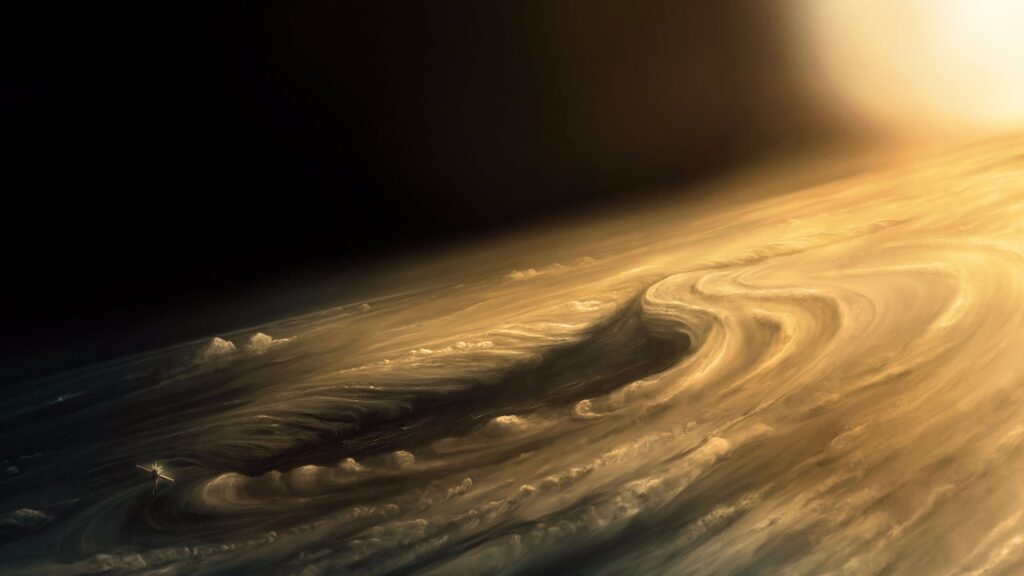
On the surface of Jupiter
When estimating the probability of an asteroid impacting the Earth, one must not only consider the mere geometric cross-section of the planet, but also the gravitational cross-section. In the case of planet Jupiter, the gravitational field is very intense – due to the mass of 317 times that of Earth – consequently, its gravitational cross-section is much larger than that of Earth. For this reason, Jupiter is hit much more often than our planet and collisions occur at a minimum speed of 60 km/s, the escape velocity of Jupiter. In addition to the mass factor, the relative proximity to the inner solar system allows Jupiter to influence the distribution of minor bodies. For a long time, it was believed that these characteristics led the gas giant to eject from the system or to attract most of the stray objects in its vicinity and, consequently, to determine a reduction in the number of potentially dangerous objects for the Earth. Subsequent dynamical studies have shown that in reality Jupiter’s function as an “inner solar system shield” has often been overestimated. The situation is in fact much more complex: the presence of Jupiter, in fact, tends to reduce the frequency of impact on Earth of objects coming from the Oort Cloud (long-period comets), while it increases it in the case of asteroids and short-period comets, which are deflected towards Earth’s orbit!
For this reason, Jupiter is the planet in the solar system characterized by the highest frequency of impacts, which justifies its name of “sweeper” or “cosmic vacuum cleaner” of the solar system. Studies of 2009 suggest a frequency of one impact every 50-350 years, for an object of 0.5-1 km in diameter; impacts with smaller objects would occur with greater frequency, as is natural and as evidenced by the chronology of events that we are about to tell you.
The 1994 was a memorable year for planetary astronomy. For the first time, in fact, when comet Shoemaker-Levy 9 was captured by Jupiter and dismembered in at least 21 fragments that fell on the planet starting from July 16 of that year, it was possible to witness live the collision between two celestial bodies.
Unfortunately, the geometry of the collision was not conducive to direct observations from Earth, and impacts could be observed only by the Galileo probe. The only thing left for us earthlings to do was to follow the evolution of the scars left in the gaseous atmosphere of the planet, with perturbations so evident and contrasted that even very modest optical instruments allowed the observation.
It seemed an exceptional case, so that to find something similar we had to go back to December 1690, when Gian Domenico Cassini left to posterity a drawing of Jupiter’s disk on which appeared spots very similar to those left by the impacts of July 1994, and this belief on the rarity of these events lasted in practice until our days.
Read more about Astronomy and Astrophysics: https://www.coelum.com/articoli/astronomy-and-astrophysics-by-giovanni-anselmi
